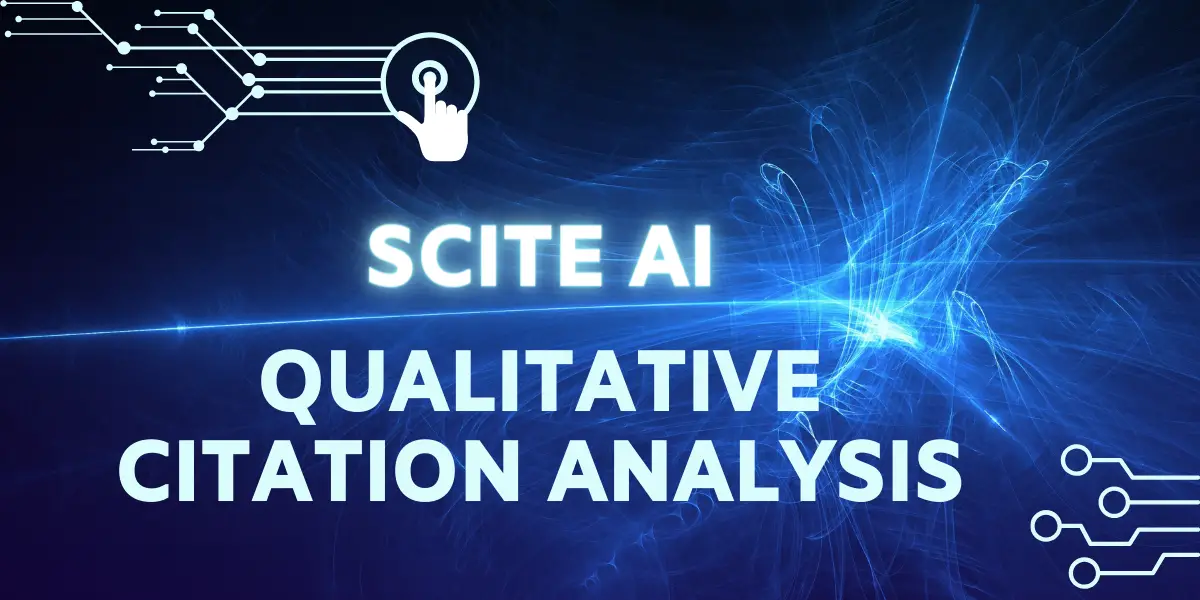What is Scite AI:Qualitative Citation Analysis

In the vast realm of scientific research, the credibility and context of citations play a pivotal role. Scite AI emerges as a groundbreaking platform, offering a unique approach to understanding research articles through Smart Citations. This article delves deep into Scite AI, its features, applications, and its place in the modern research landscape.
Table of Contents
What is Scite AI?
Scite AI is a Brooklyn-based startup designed to revolutionize the way researchers discover and understand scientific articles. Through its innovative Smart Citations feature, Scite AI provides context to citations, indicating whether the cited article offers supporting or contrasting evidence. This not only enhances the credibility of research but also offers a comprehensive understanding of the scientific discourse.
Key Features of Scite AI
- Smart Citations: Citations that display the context and describe whether the article provides supporting or contrasting evidence.
- Reference Check: Allows users to see if any of their references have been retracted, heavily contrasted, or find missing citations.
- Visualizations: Interactive visual tools to understand how articles cite each other.
- Dashboards: Explore journal and institutional metrics, compare rankings, and track yearly changes.
- Citation Statement Search: A unique database to surface debates and discussions in topics of interest.
How to use Scite AI?
- Start with a Query: Begin by searching for a specific topic or article of interest.
- Explore Smart Citations: Understand the context in which articles have been cited.
- Use Reference Check: Upload manuscripts to verify the credibility of references.
- Visualize Research: Use interactive tools to see how articles interrelate.
- Stay Updated: Get notifications when new supporting or contrasting citations are made to your articles.
The Applications of Scite AI
- Research Validation: Understand the broader context of research findings by seeing how they’ve been cited.
- Literature Reviews: Speed up the process of literature reviews and critical analysis.
- Academic Writing: Find appropriate references and data when drafting papers.
- Research Evaluation: For universities and governments to track and improve research outcomes.
Is Scite AI free?
While Scite AI offers a free 7-day trial, advanced features and comprehensive access come with specific pricing plans.
See more:How to Fix Midjourney “Failed to Request Post Due to Non-JSON Response” Error
Limitations of Scite AI
- Coverage: Might not encompass all journals or publications.
- Bias: Potential for over-reliance on the platform’s classification of supporting or contrasting evidence.
- Learning Curve: Requires familiarization for new users to fully harness its capabilities.
How does Scite AI work?
At its core, Scite AI uses Smart Citations to provide context to traditional citations. By analyzing over 1.2 billion citation statements, it offers a classification that describes whether a citation provides supporting or contrasting evidence for the cited claim. This approach aids in understanding the broader consensus or disputes surrounding specific research findings.
Alternatives of Scite AI?
- Google Scholar: A widely-used platform for academic search but lacks the context-driven approach of Scite AI.
- PubMed: A database for biomedical literature.
- Web of Science: Offers citation indexing but without the qualitative analysis of Scite AI.
Conclusion
Scite AI stands out as a beacon in the world of scientific research, offering a fresh perspective on citations. By providing context and qualitative analysis, it ensures that researchers, students, and academicians can navigate the vast sea of scientific literature with confidence and clarity. As science progresses, tools like Scite AI will be instrumental in ensuring the credibility and understanding of research findings.

